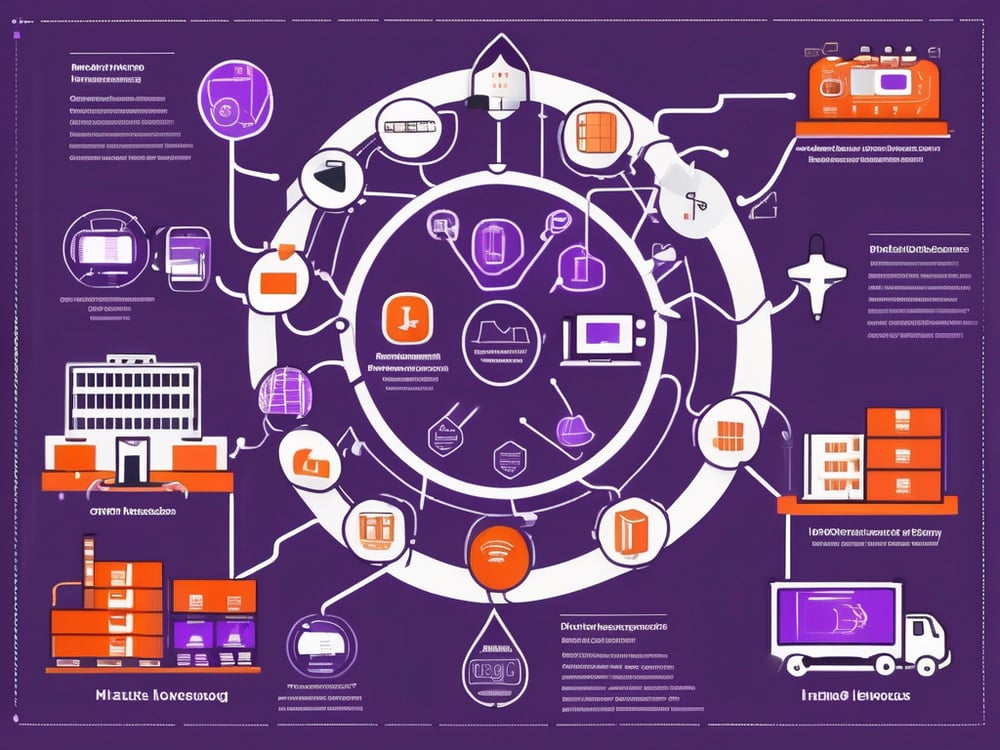“In the world of consumer electronics, timely delivery is as crucial as the product itself.” This statement resonates deeply within the fast-paced tech industry, where competition is not just about innovative products but also revolves around efficient fulfillment systems.
Successfully managing the entire fulfillment process—from inventory management to shipping—can set a brand apart in a saturated market.
In this article, we will explore various strategies for optimizing consumer electronics fulfillment, covering everything from understanding industry nuances to overcoming inherent challenges.
Table of Contents
ToggleKey Strategies for Optimizing Fulfillment
Let’s explore some innovative strategies designed to enhance fulfillment efficiency and effectiveness.
Streamlining the Supply Chain Process
A well-structured supply chain is the backbone of successful fulfillment. By thoroughly assessing each step—from component procurement to the final delivery—companies can pinpoint bottlenecks and inefficiencies that hinder smooth operations.
- Just-In-Time (JIT) Inventory: This method reduces inventory holding costs while ensuring products are available when needed. JIT helps prevent overstocking and stockouts, keeping costs in check and meeting customer demand without delays.
- Supplier Collaboration: Working closely with suppliers and logistics providers can help optimize routes, reduce transit times, and improve overall delivery speed. This collaborative approach leads to smoother operations and faster deliveries.
- Multi-Channel Distribution: Embrace a flexible, multi-channel distribution strategy that can cater to diverse customer preferences and regional demands. This adaptability not only meets customer expectations but also gives businesses an edge over slower competitors.
By enhancing flexibility and speed, companies can accelerate the supply chain, leading to faster deliveries and a better customer experience.
Leveraging Technology for Efficient Fulfillment
Technology is a game-changer for modern fulfillment strategies. The right technological tools can streamline operations, reduce errors, and enhance efficiency across all stages of the process.
- Warehouse Management Systems (WMS): These systems optimize inventory tracking, order picking, and routing. With WMS, businesses gain real-time insights into inventory levels and can minimize stockouts and delays.
- Automation: Robotic picking and packing significantly reduce labor costs, improve accuracy, and increase speed. Automated systems handle routine tasks efficiently, allowing staff to focus on more complex activities.
- Predictive Analytics: By analyzing consumer data and historical trends, businesses can forecast demand with greater precision. This helps in adjusting inventory levels, reducing overstock, and ensuring popular products are always available.
- Internet of Things (IoT): IoT devices offer real-time tracking of inventory and shipments, providing transparency throughout the fulfillment process. Customers can track their orders in real time, enhancing their trust and overall experience with the brand.
By harnessing the power of technology, companies can optimize their fulfillment process, streamline operations, and keep customers informed every step of the way.
Implementing Quality Control Measures
Quality control is essential for maintaining customer satisfaction and loyalty.
- Pre-Dispatch Checks: Conducting thorough quality inspections at each stage of fulfillment—whether during inventory intake, order picking, or packing—helps catch errors early, ensuring customers receive the correct items in perfect condition.
- Employee Training: Regular training on quality standards and best practices is crucial for ensuring accuracy and consistency across all fulfillment activities. A well-trained workforce is more likely to catch mistakes and prevent costly errors.
- Audits and Feedback Loops: Regular audits and feedback loops help identify recurring issues and areas for improvement. This proactive approach can prevent minor issues from escalating into larger problems.
- Leveraging Customer Feedback: Customer reviews and satisfaction surveys provide invaluable insights into how well the fulfillment process meets expectations. By analyzing this feedback, businesses can fine-tune their operations to better align with consumer preferences.
Mastering Consumer Electronics Fulfillment: A Complete Guide
As technological advancements accelerate, a swift and efficient fulfillment system is crucial for staying competitive. A streamlined fulfillment process ensures product availability and significantly impacts the customer experience, fostering loyalty.
In the fast-paced electronics sector, efficient fulfillment is essential for maintaining customer trust and growing your brand. Here’s why:
- Customer Loyalty: Delays in fulfillment can drive customers to competitors. 79% of consumers say they would consider switching brands due to fulfillment delays (Supply Chain Dive).
- Cost Reduction: Efficient logistics reduce warehousing and transportation costs, which lowers overhead and improves profit margins.
- Competitive Pricing: Optimizing fulfillment can allow businesses to offer more competitive pricing in a price-sensitive market.
- E-Commerce Growth: With more consumers shopping online, businesses need to meet expectations for fast, reliable 3pl service.
- Technological Advantage: AI and machine learning help predict demand, manage inventory effectively, and personalize marketing efforts, providing businesses with a competitive edge.
Key Components of Consumer Electronics Fulfillment
To build an effective fulfillment system, certain key components must be considered:
- Inventory Management: Keeping track of stock levels to avoid overstocking or stockouts.
- Order Processing: Streamlined processes for picking, packing, and dispatching products.
- Shipping Logistics: Efficient coordination with carriers to ensure timely delivery.
- Customer Communication: Keeping customers informed throughout the fulfillment process enhances satisfaction.
Overcoming Challenges in Consumer Electronics Fulfillment Services
Despite the best strategies, challenges are inevitable in consumer electronics fulfillment. Here’s how to address common obstacles:
Addressing Common Fulfillment Obstacles
- Unpredictable Demand: Use real-time tracking and data analytics to forecast demand more accurately and adjust inventory levels proactively.
- Supply Chain Disruptions: Implement adaptable systems for quick responses to disruptions and keep track of changing market conditions.
- Inventory Inaccuracies: Regular audits and updated strategies help minimize errors, ensuring stock levels are optimized and reducing excess inventory.
Solutions for Inventory Management Issues
Effective inventory management is crucial for smooth fulfillment:
- Track Stock Levels: Invest in inventory management software for real-time updates.
- Forecast Demand: Use reliable forecasting methods to avoid stockouts and overstocking.
- Automated Reordering: Set up systems to reorder popular items automatically and keep inventory balanced.
Tackling Shipping and Delivery Challenges
Meeting customer expectations for fast and reliable delivery:
- Fast Delivery Options: Offer multiple shipping options like express, standard, or in-store pickup.
- Reliable Carriers: Build strong relationships with trusted carriers or develop in-house delivery options.
- Sustainable Shipping: Consider eco-friendly practices like carbon-neutral delivery and biodegradable packaging to appeal to conscious consumers.
By addressing these common challenges, businesses can maintain smooth fulfillment operations, enhance customer satisfaction, and stay ahead in the competitive consumer electronics market.
Measuring the Success of Your Fulfillment Strategy
Measuring success is critical in understanding the efficacy of your fulfillment strategy. Implementing comprehensive metrics allows businesses to quantify their performance and make necessary adjustments.
Key performance indicators (KPIs) provide crucial insights into the fulfillment process. Some vital KPIs include:
- Order Accuracy: The percentage of orders delivered correctly.
- Delivery Time: Average time taken to deliver orders.
- Return Rate: The percentage of products returned by customers.
- Customer Satisfaction Score: Measured through surveys and feedback.
By focusing on these KPIs, organizations can continuously refine their operations and enhance customer satisfaction.
Transform Your Fulfillment Strategy for Long-Term Success
In today’s fast-paced electronics market, optimizing fulfillment is critical to staying ahead. By leveraging technology, refining inventory management, and addressing common challenges, businesses can create a seamless experience that keeps customers satisfied and loyal.
As customer expectations rise, continuous improvement in fulfillment strategies is necessary to maintain a competitive edge.
Ready to optimize your fulfillment strategy? Contact Fulfyld now to take your operations to the next level..






